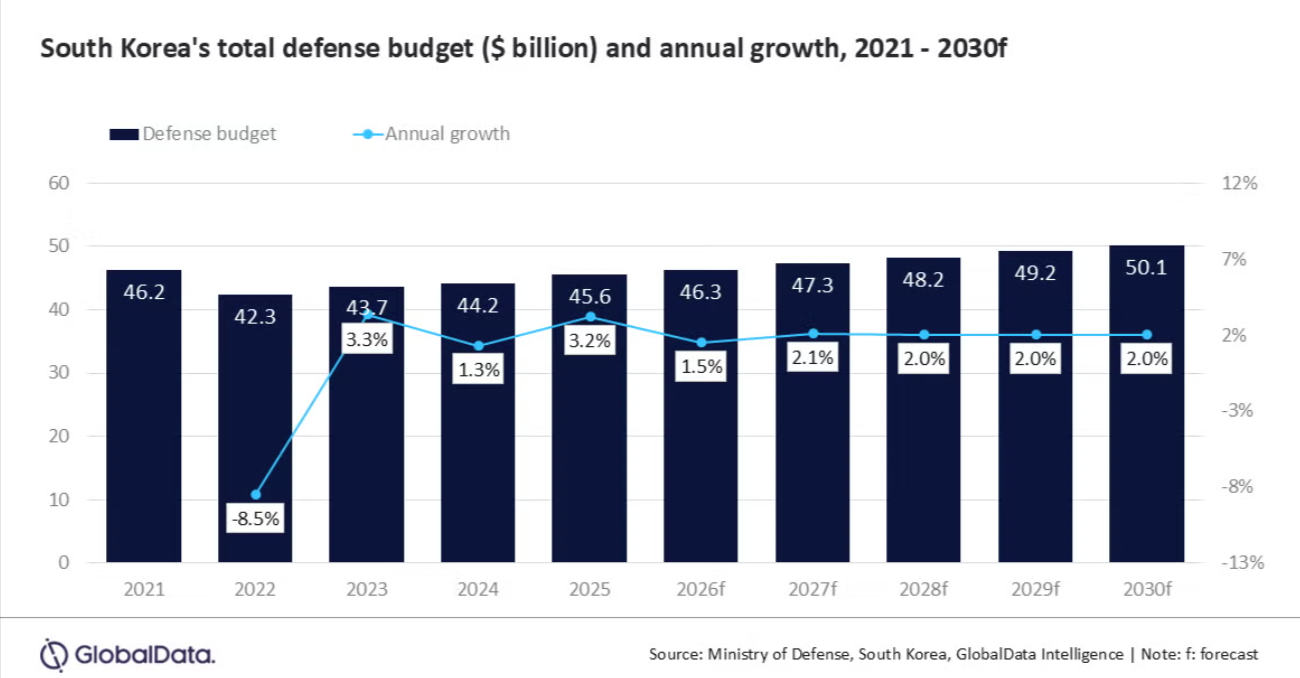South Korea has poured US$222 billion (A$339 billion) into defence spending from 2021 to 2025, ramping up its military capabilities amid rising tensions with North Korea and China’s growing assertiveness.
The investment, according to GlobalData, a leading data and analytics company, spans advanced weapons systems, cybersecurity fortifications, and military readiness, signalling a strategic shift toward self-reliance.
With 28,500 U.S. troops still stationed in the country, South Korea faces a delicate balance between indigenous defence expansion and continued reliance on American military support.
South Korea's modernisation drive is based on home-grown military technology.
The country has prioritised indigenous production, acquiring the KF-21 Boramae multi-role aircraft, K239 Chunmoo multiple rocket launch systems, and K9 self-propelled artillery systems.
The successful 2022 flight of the KF-21 prototype marked a milestone in South Korea’s push for combat aircraft self-sufficiency, with full deployment expected by 2028.

Analysts say this shift reduces reliance on foreign imports while strengthening regional deterrence.
Despite these advancements, North Korea’s nuclear-capable missile tests remain a pressing concern. South Korea continues to bolster its air, naval, and missile defence capabilities, but questions linger over its long-term dependence on the U.S. military presence.
With Donald Trump’s return to office, uncertainty looms over Washington’s commitment to South Korea’s security, prompting speculation that Seoul may redirect defence budgets toward further indigenisation.
For investors, South Korea’s defence sector presents both risks and opportunities. The country is expanding its arms exports, aiming to achieve economies of scale while keeping domestic defence costs down. This strategy could boost South Korea’s global defence footprint, but geopolitical volatility - especially in U.S.-China relations and North Korea’s unpredictability - add complexity to the equation.
Looking ahead, South Korea’s defence trajectory will be shaped by regional tensions and global alliances.
The country’s commitment to military self-sufficiency is clear, but its ability to navigate shifting geopolitical landscapes will determine whether its $222 billion investment translates into long-term strategic stability.
Meanwhile, major South Korean companies spent an average of 2.9 billion won (US$2.1 million) on information protection last year, industry data showed.
Korea Internet & Security Agency (KISA) data indicates that 10 companies have each invested over 100 billion won in cybersecurity in the last three years.



